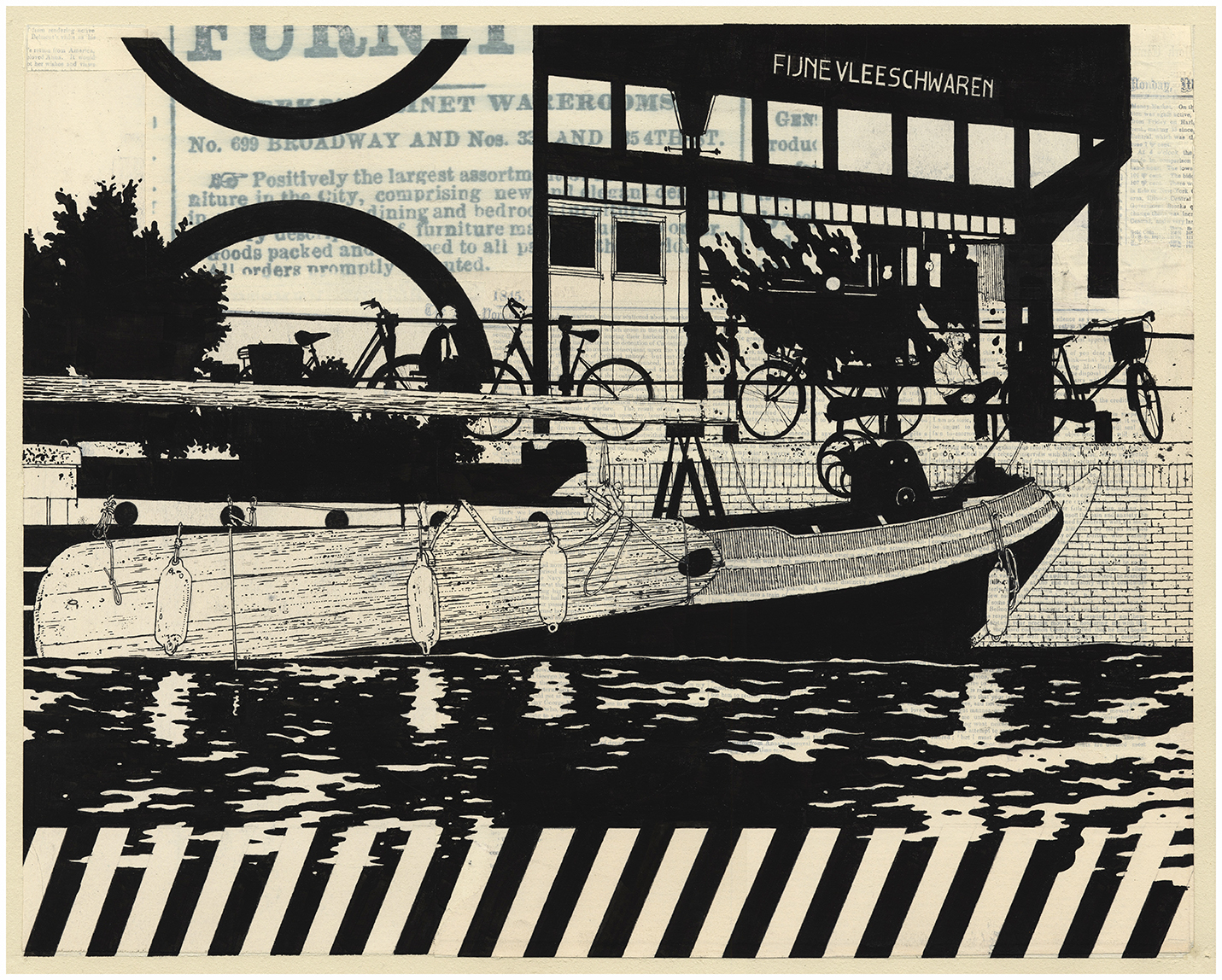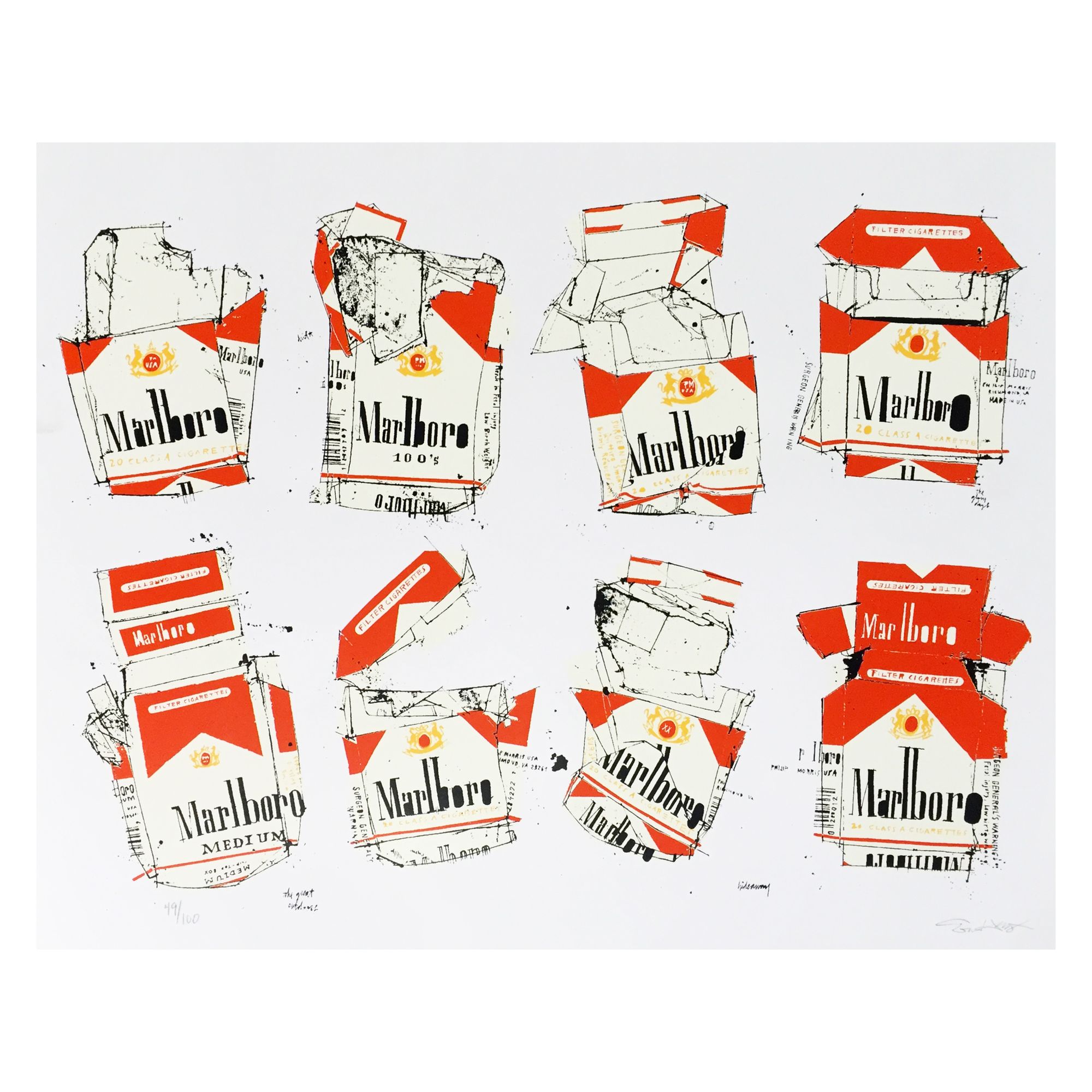
The print was released for a 2007 exhibition. At the time, Hecox’s work was part of a touring exhibition in the USA, Beautiful Losers, that later came to Europe, and was also released as a film and book, exploring the D.I.Y culture that emerged in the US in the 1990s with a group of iconic indie artists, skateboarders and musicians that included Harmony Korine, Aaron Rose, Ed and Deanna Templeton, Mark Gonzales, Margaret Kilgallen and Barry McGee.
Hecox himself was heavily involved in pushing this culture, creating graphics for legendary skateboard company Chocolate since 1997. Like his Beautiful Loser peers his approach has always been free—and much more intuitive than it might appear from the perfected geometry of his compositions, that combine flat Pop, abstract and Russian Constructivist aesthetics.
Originally from Colorado, Hecox has constantly returned to the rough edges of the urban environment for inspiration–in the past, the London’s East End, San Francisco’s Mission District, or Shibuya, Tokyo–looking for the forms that give these places their infrastructure.
In a new series of paintings, based on photographs he took last Autumn in Holland and Iceland, Hecox’s attention turns to an urban iconography more associated with cities in Northern Europe—city boats. The works return to Amsterdam this week, in the form of a solo exhibition Northern at Makerversity Amsterdam, hosted by Andenken gallery (opening alongside Drew Leshko and running to November 14th).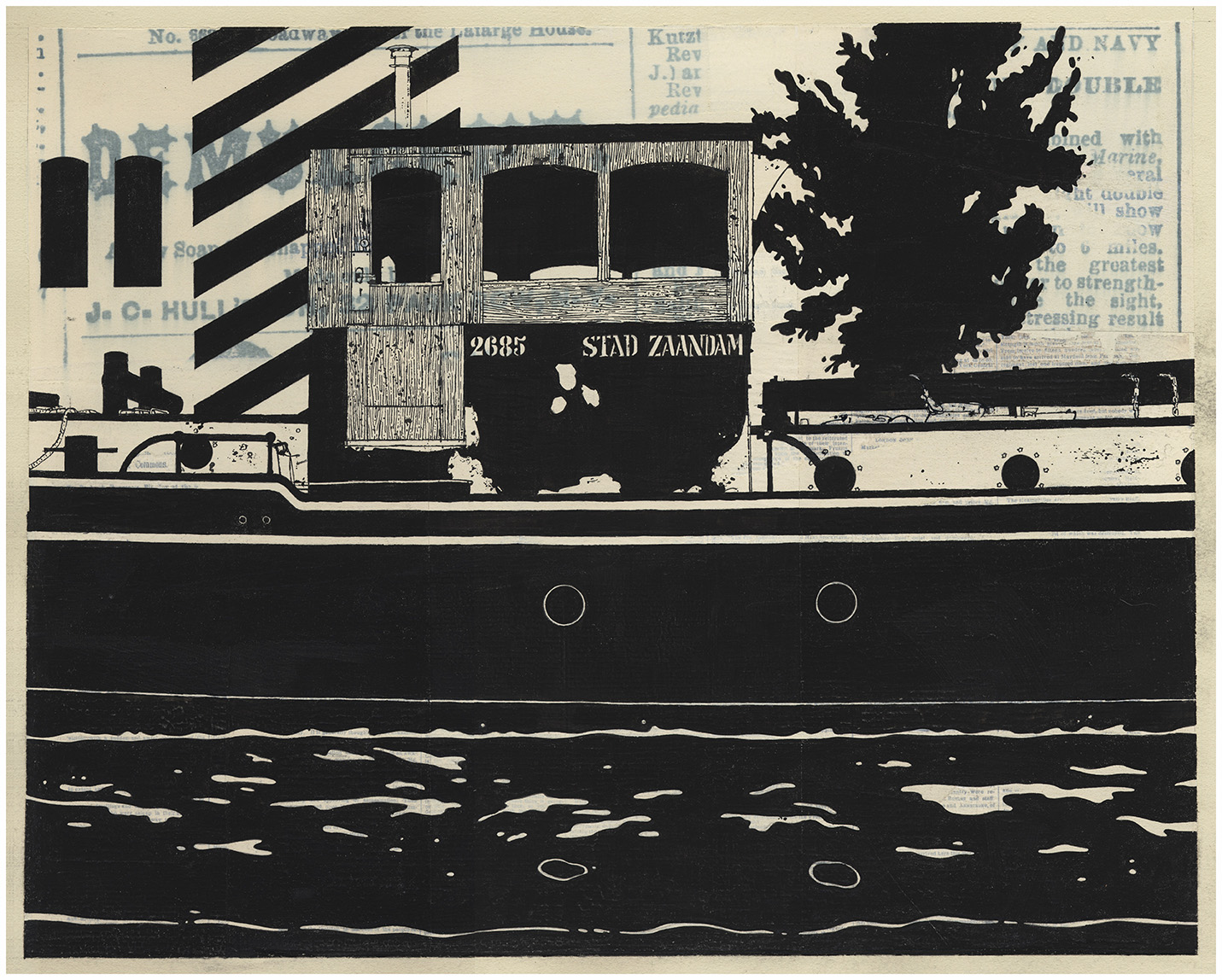
So these new works are mostly based on photographs you took on a trip in Northern Europe following your solo show in Amsterdam last year?
Yes, the work in the show is based on a trip from about a year ago to Amsterdam and Iceland. Typically my process involves taking a lot of photos when I travel and making mental notes on how a place strikes me visually and emotionally, all of which I draw upon later on when I sit down to make the work. The photographs are an important reference point but it’s really most essential to get a feeling of a place and to pull that into the work as well. For the Amsterdam work I felt that working with bold amounts of black seemed to capture the feeling of the place well.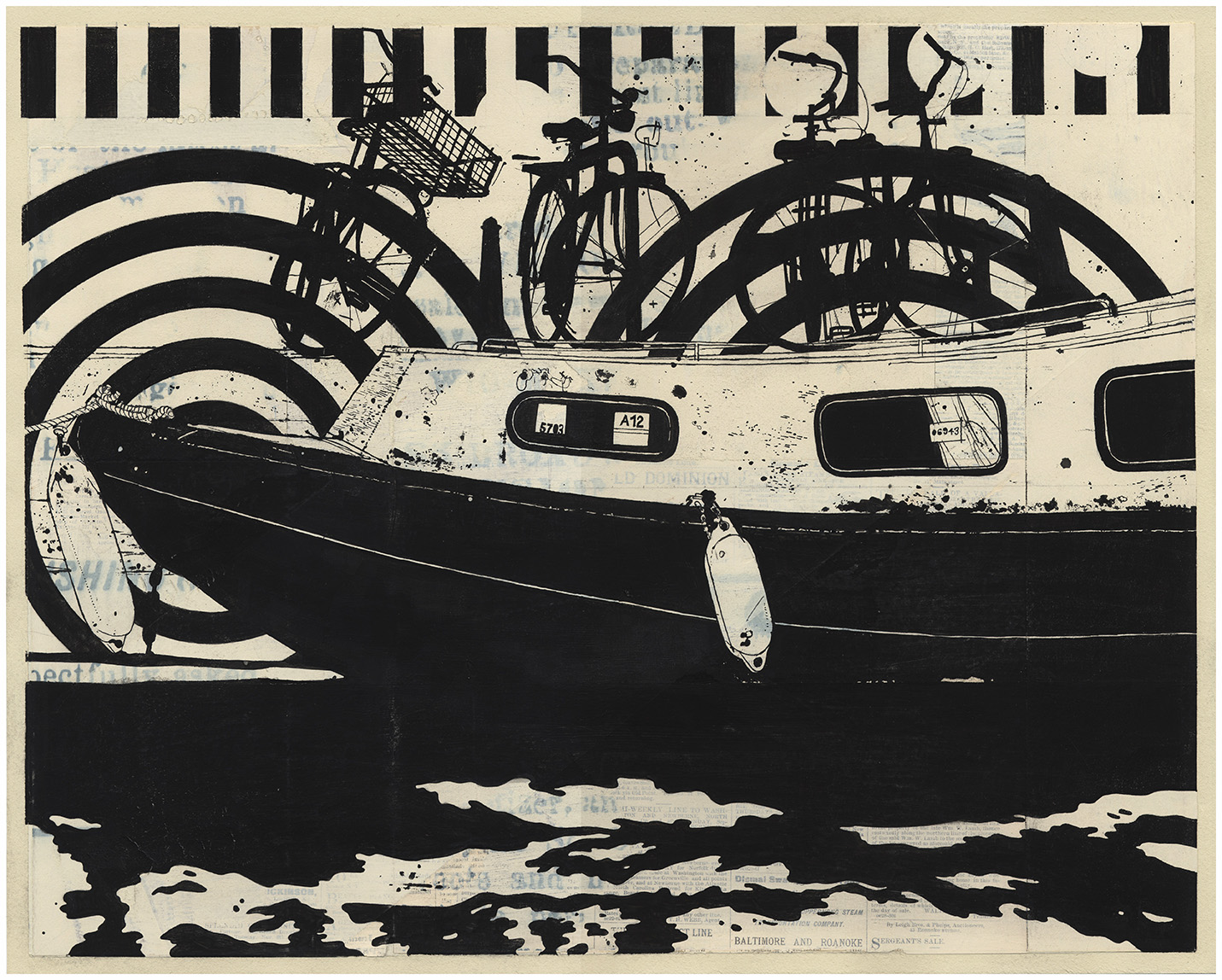
There are a lot of boats in the paintings I’ve seen: were you consciously seeking a certain kind of imagery?
I didn’t necessarily set out looking for boats as subject matter. When I travel and shoot photos I’m not really seeking out specific things, I just try to let experiences happen naturally and record them. On my trip to Amsterdam I was able to take a very nice, leisurely boat ride on the canals one Saturday and get that perspective from on the water, which of course is such a dominant feature of the city. The various forms of the boats on the canals, with houseboats and other smaller ones, was very interesting to me and so I wanted to explore a series with that. In general, I try to let random experiences be what guide and determine my subject matter rather than setting out with a plan in advance.
There’s an interesting interplay in these new paintings too, between the paper you’re using–the old newsprint peeking out from behind the paint–and the contemporary imagery. How purposeful is that?
The background paper that I prepare for working on is made up of very old newspapers from the 1800’s and scraps of other newsprint or old book pages that I wash over with a thin layer of off-white acrylic paint. The reason I use this paper is to create a feeling of texture, age and patina to the work. I don’t deliberately arrange any of the words in the background to correspond to the imagery, but sometimes it may happen by accident. Despite the controlled appearance of my work, I’m a big believer in letting things happen that are not planned or deliberate. The structure of the black and white is the same, I don’t exactly how things will come out with all the overlapping black shapes, the final pieces are always somewhat of a surprise to me, including the elements of newspaper pop through from the background.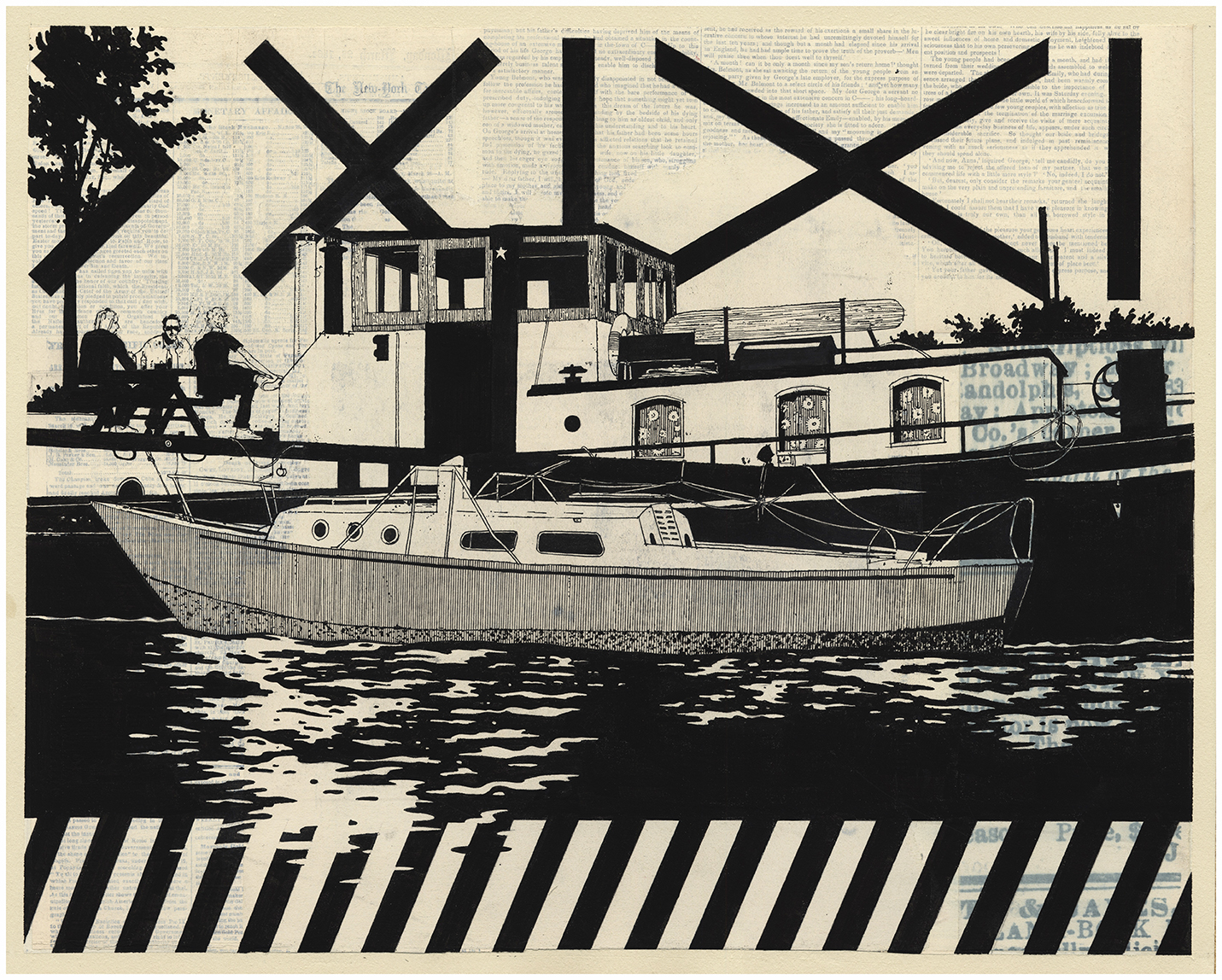
You’ve been working for some time and often between the fields of art, design and graphics, often not easy to do–how has the perception of what you do changed over the years, do you see people are more willing to accept the plurality of your practice nowadays?
Yes, I’ve done quite a bit of work in different areas, both design and fine art. At this point I just think of them as separate parts of the same overall process, like if my mind is a city and the art and design are just two different neighbourhoods. I always try to bring the most honest, artistic process I can to commissioned work for a client and at the same time I think about the graphic impact my personal work has, almost as if it’s functioning as a poster design or something. As far as anyone else’s perception of what is real or honest in the crossover of art and design I don’t know, but there is certainly a high degree of money-making awareness in fine art so I think that characterizing fine art as non-commercial is pretentious and unrealistic. I think as long as the focus remains on doing quality work with integrity there is not a problem with working on both sides. I do fewer design projects that I used to in the past but I think people still know me though design work I’ve done, especially skateboard graphics. I just want the work I do to reach people and connect with them in a positive way.
I recently heard an artist in his seventies say that everyone’s an artist but some people are more artists because they have more problems to solve. What issues does your work help you figure out?
I don’t think I’m trying to work out any issues or express any internal conflicts through my artwork, however, I think just having a consistent practice of making art probably has therapeutic qualities to it. I think that art, like any worthwhile pursuit, is difficult and frustrating at times but it’s highly satisfying and may help to create an inner balance as well. I’ve been making art pretty consistently since I was just a little kid so it’s difficult for me to even separate the concepts of art and self, sometimes it feels like it’s saving my sanity and other times it feels like it’s making me crazy.
Evan Hecox ‘Northern‘ runs from 28 October until 14 November at Makerversity Amsterdam hosted by Andeken Gallery, Amsterdam. Courtesy the artist and Andenken Gallery